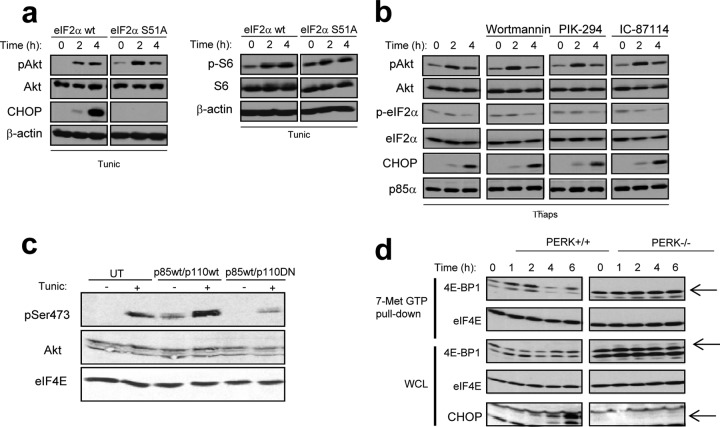
| Size | Price | Stock | Qty |
|---|---|---|---|
| 5mg |
|
||
| 10mg |
|
||
| 25mg |
|
||
| 50mg |
|
||
| 100mg |
|
||
| 250mg |
|
||
| 500mg |
|
||
| Other Sizes |
|
Purity: ≥98%
PIK-294 is a novel, potent and highly selective inhibitor of PI3K (phosphatidylinositol 3-kinase) p110δ (IC50 = 10 nM) with potential anticancer activity. PIK-294 was 1000-, 49-, and 16-fold less potent against PI3K//, respectively. It has greater strength than the parent substance.
| Targets |
p110δ (IC50 = 10 nM); p110γ (IC50 = 160 nM); p110β (IC50 = 490 nM); p110α (IC50 = 10 μM);
|
|---|---|
| ln Vitro |
Different roles in CXCL8-induced neutrophil migration have been suggested by analysis of the Class I PI3 Kinase catalytic isoforms p110 (IC50=10 μM), p110 (IC50=0.49 μM), p110 (IC50=0.01 M), and p110 (IC50=0.16 μM) using the inhibitor PIK-294. Both chemokinetic and chemotactic migration induced by CXCL8 are inhibited by PIK-294[1]. The PI3K selective inhibitor PIK-294 pre-treatment of cells significantly reduces the amount of CXCL8-induced migration in both the gradient and non-gradient assays. The two concentrations of PIK-294 used are 1 μM and 10 μM . In the non-gradient assay compared to the gradient assay, pre-treatment with 1 μM more strongly inhibits migration. In both assays, pretreatment with 10 μM significantly inhibits migration to a greater extent than the lower dose. The PI3K inhibitors Wortmannin (50 nM), PIK-294 (10 μM), and AS-605240 (10 μM) cause a decrease in the phosphorylation of Akt in the cells prior to stimulation with CXCL8. When cells are pre-treated with the PI3K inhibitors Wortmannin (50 nM), PIK-294 (10 μM), and AS-605240 (10 μM) for 2 minutes prior to stimulation with GM-CSF and the DMSO control, the phosphorylation of Akt is decreased (p<0.05 for PI3K inhibition)[2].
|
| Cell Assay |
Neutrophils at a concentration of 6×106 cells/mL are pre-treated with 1 μM and 10 μM of the PIK-294 for 30 mins prior to the addition of CXCL8 (100 ng/mL) or 0.5 ng/mL GM-CSF. Then a non-gradient or gradient gel assay depending on the type of migration is performed. The gels are then constructed and the migration studied[2].
|
| References |
| Molecular Formula |
C28H23N7O2
|
|---|---|
| Molecular Weight |
489.5279
|
| Exact Mass |
489.191
|
| Elemental Analysis |
C, 68.70; H, 4.74; N, 20.03; O, 6.54
|
| CAS # |
900185-02-6
|
| Related CAS # |
900185-02-6
|
| PubChem CID |
24905149
|
| Appearance |
White to off-white solid powder
|
| Density |
1.4±0.1 g/cm3
|
| Boiling Point |
790.4±70.0 °C at 760 mmHg
|
| Flash Point |
431.8±35.7 °C
|
| Vapour Pressure |
0.0±2.9 mmHg at 25°C
|
| Index of Refraction |
1.753
|
| LogP |
3.34
|
| Hydrogen Bond Donor Count |
2
|
| Hydrogen Bond Acceptor Count |
7
|
| Rotatable Bond Count |
4
|
| Heavy Atom Count |
37
|
| Complexity |
870
|
| Defined Atom Stereocenter Count |
0
|
| SMILES |
O=C1N(C2C(C)=CC=CC=2)C(CN2C3C(=C(N)N=CN=3)C(C3C=C(O)C=CC=3)=N2)=NC2C=CC=C(C1=2)C
|
| InChi Key |
WFSLJOPRIJSOJR-UHFFFAOYSA-N
|
| InChi Code |
InChI=1S/C28H23N7O2/c1-16-7-3-4-12-21(16)35-22(32-20-11-5-8-17(2)23(20)28(35)37)14-34-27-24(26(29)30-15-31-27)25(33-34)18-9-6-10-19(36)13-18/h3-13,15,36H,14H2,1-2H3,(H2,29,30,31)
|
| Chemical Name |
2-((4-amino-3-(3-hydroxyphenyl)-1H-pyrazolo[3,4-d]pyrimidin-1-yl)methyl)-5-methyl-3-(o-tolyl)quinazolin-4(3H)-one
|
| Synonyms |
PIK-294; PIK294; PIK 294;
|
| HS Tariff Code |
2934.99.9001
|
| Storage |
Powder -20°C 3 years 4°C 2 years In solvent -80°C 6 months -20°C 1 month |
| Shipping Condition |
Room temperature (This product is stable at ambient temperature for a few days during ordinary shipping and time spent in Customs)
|
| Solubility (In Vitro) |
DMSO: ~98 mg/mL (200.2 mM)
Water: <1 mg/mL Ethanol: <1 mg/mL; |
|---|---|
| Solubility (In Vivo) |
Solubility in Formulation 1: ≥ 2.5 mg/mL (5.11 mM) (saturation unknown) in 10% DMSO + 90% Corn Oil (add these co-solvents sequentially from left to right, and one by one), clear solution.
For example, if 1 mL of working solution is to be prepared, you can add 100 μL of 25.0 mg/mL clear DMSO stock solution to 900 μL of corn oil and mix evenly. (Please use freshly prepared in vivo formulations for optimal results.) |
| Preparing Stock Solutions | 1 mg | 5 mg | 10 mg | |
| 1 mM | 2.0428 mL | 10.2139 mL | 20.4278 mL | |
| 5 mM | 0.4086 mL | 2.0428 mL | 4.0856 mL | |
| 10 mM | 0.2043 mL | 1.0214 mL | 2.0428 mL |
*Note: Please select an appropriate solvent for the preparation of stock solution based on your experiment needs. For most products, DMSO can be used for preparing stock solutions (e.g. 5 mM, 10 mM, or 20 mM concentration); some products with high aqueous solubility may be dissolved in water directly. Solubility information is available at the above Solubility Data section. Once the stock solution is prepared, aliquot it to routine usage volumes and store at -20°C or -80°C. Avoid repeated freeze and thaw cycles.
Calculation results
Working concentration: mg/mL;
Method for preparing DMSO stock solution: mg drug pre-dissolved in μL DMSO (stock solution concentration mg/mL). Please contact us first if the concentration exceeds the DMSO solubility of the batch of drug.
Method for preparing in vivo formulation::Take μL DMSO stock solution, next add μL PEG300, mix and clarify, next addμL Tween 80, mix and clarify, next add μL ddH2O,mix and clarify.
(1) Please be sure that the solution is clear before the addition of next solvent. Dissolution methods like vortex, ultrasound or warming and heat may be used to aid dissolving.
(2) Be sure to add the solvent(s) in order.
|
 |